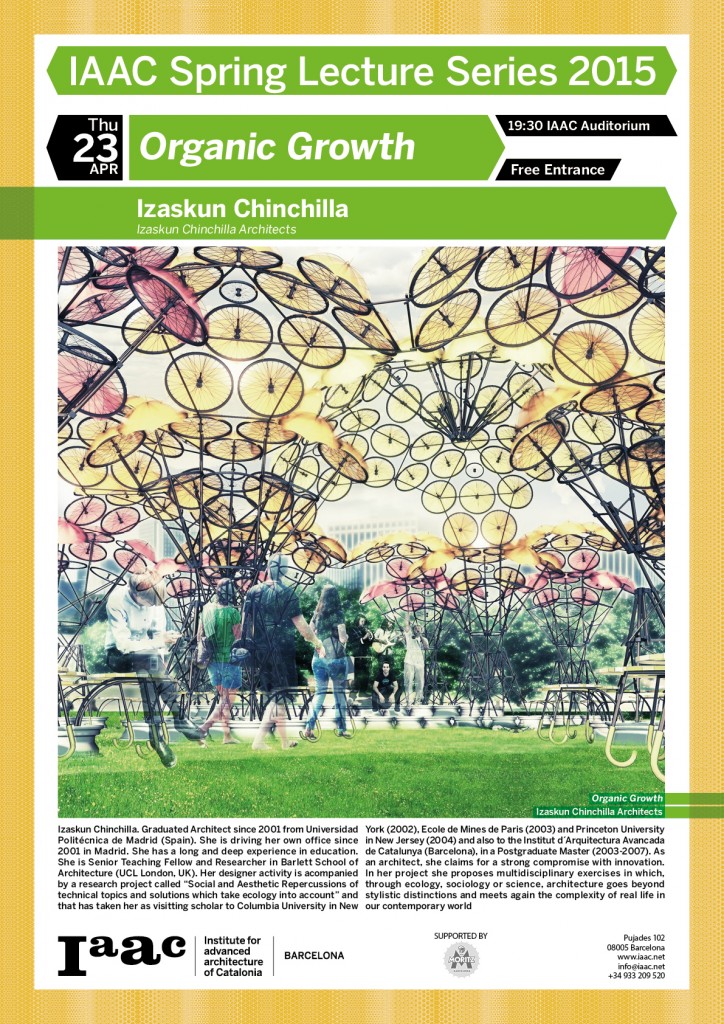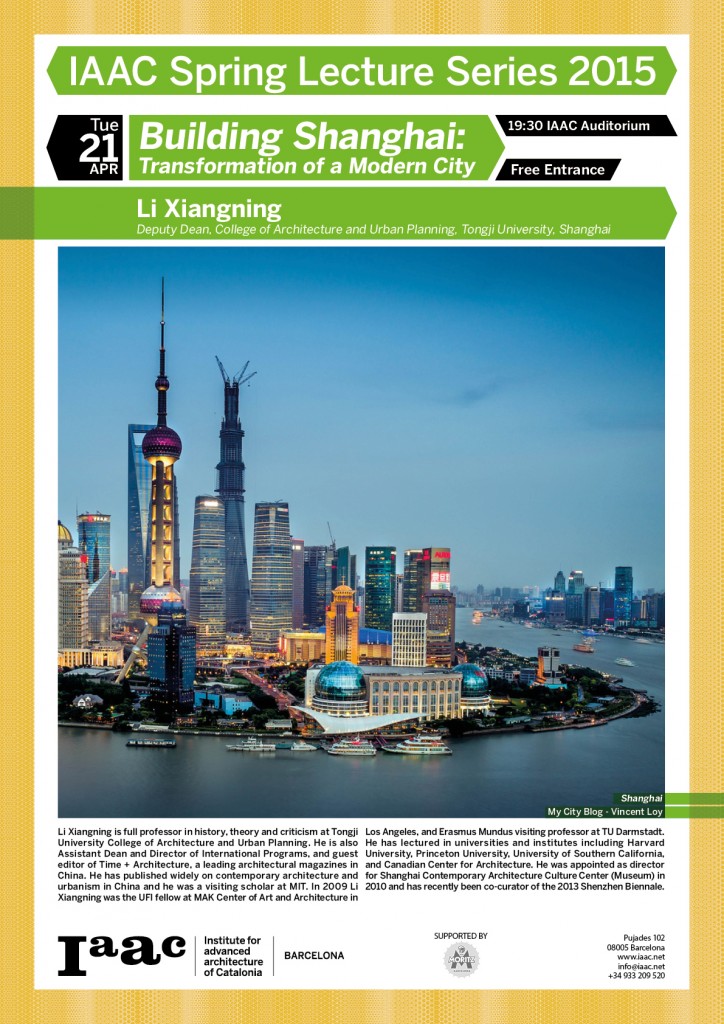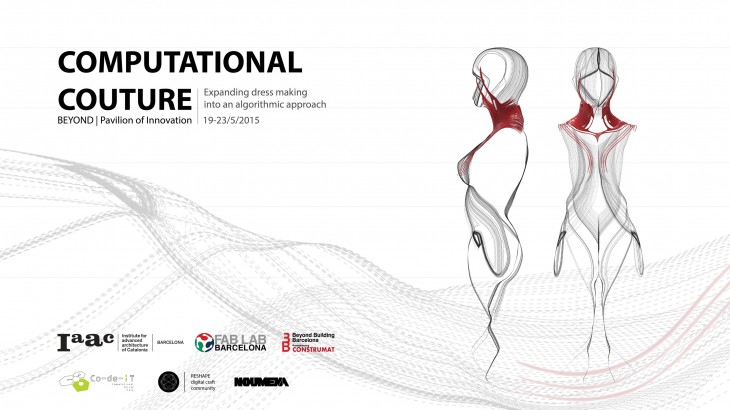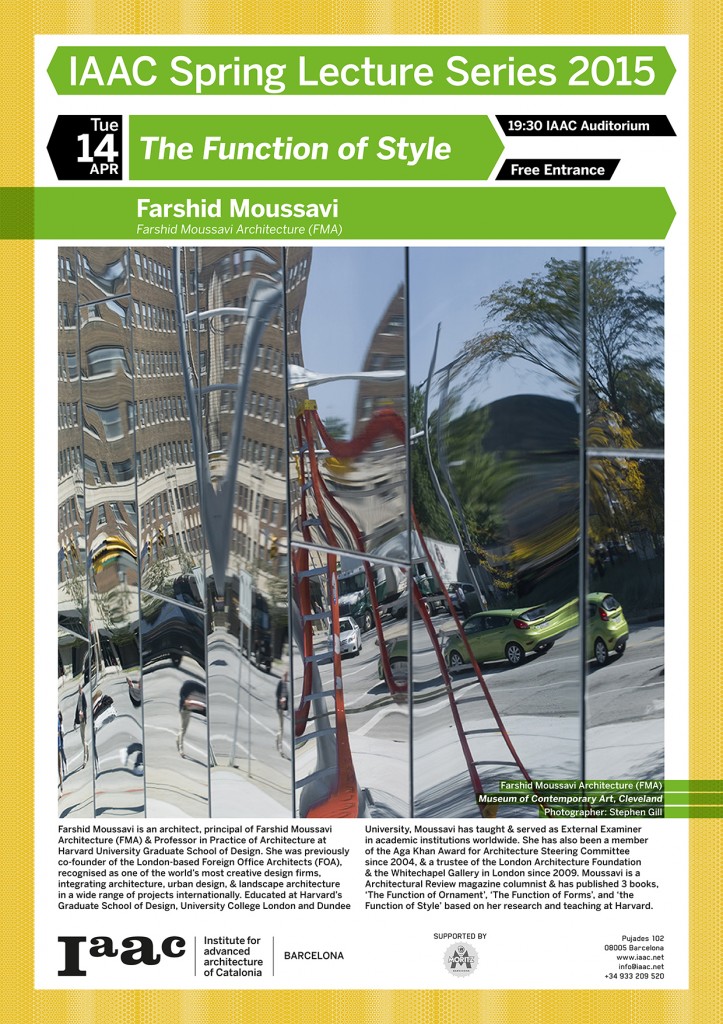Tonight we had the pleasure of hosting Izaskun Chinchilla, IAAC Post-graduate Master Alumni 2003-2007, as part of the IAAC Spring Lecture Series.
Izaskun discussed the notion of ‘biophilia’ that has been recently addressed by several authors in the field of architectural design. Biophilic spaces and objects, are supposed to connect with natural preferences of humans, determined by their physiology. These preferences include natural light, vegetation, a particular rage of materials, specific color arrangements and spatial conditions reminding natural landscapes. A more sophisticated definition of biophilia is deeply informed by perception, psychology or social studies.
The purpose of this lecture was, nevertheless, exploring the paradoxes of biophilia. Though biophilia might be supposed to be sympathetic with ecological thinking, it might in fact collapse with ecological dictates. A real independence from fuel is now, for example, only possible in dense, continuous and mixed used cities which look quite grey and artificial. Cultural studies, gender theory, social clues or architecture history might also find the recognition of universal human preferences contradictory.
The lecture explored an intellectual perspective in which burdening with problems, and not denying them, is precisely what makes knowledge emerge. The lecture didn’t want to contribute to peaceful architectural paradigms but, precisely, build up a well defined and significant controversy.
Izaskun Chinchilla Architects recently won the City of Dreams competition in NY with a proposition titled Organic Growth. They will build a pavilion in Governors Island this summer. The pavilion will be fully built out of recycled materials (bicycle wheels, photographer tripods and umbrellas among others) and put together by volunteers. Izaskun used the will reflect on the design for this pavilion as a case study for an application of biophilic principles.




